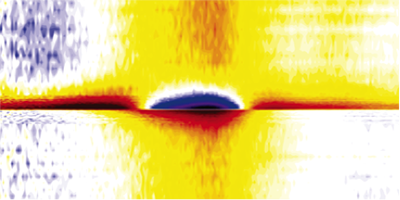Following the Footsteps of a Chemical Reaction
Prying open the secrets of chemical reactions on an atomic scale requires speed and cleverness. Speed comes from ultrafast laser spectroscopy in which short light pulses induce reactions—for instance, by exciting a molecule to a higher electronic state—and then probe the unfolding of chemical events in real time. Yet in these so-called pump-probe methods, it is difficult to trace the specific “precursor” state that triggers the reaction because the pump pulses excite a multitude of states. But clever schemes may overcome this limitation. As reported in Physical Review Letters, Stefan Ruetzel and colleagues at the University of Würzburg, Germany, have developed pump-probe techniques capable of unambiguously identifying reaction precursors.
To follow a chemical reaction from start to finish, researchers measure molecular spectra as a function of time. In conventional schemes, a pump pulse prepares the reactant in a desired state, and a second pulse probes intermediate states as product states are reached. The authors add a third pulse to enable an intriguing trick: by measuring correlations of pulses at different frequencies as a function of time, the scheme can determine whether certain electronic transitions in the initial and final states are quantum mechanically connected. In other words, whether a certain electronic state is the precursor of another one.
Similar techniques have been demonstrated for vibrational spectroscopy, but Ruetzel et al. extend them to electronic spectroscopy by using visible wavelength pulses instead of infrared. As a demonstration, they have studied merocyanine, which occurs in two conformations (isomers), and have shown that only one of the isomers becomes a radical cation following photoexcitation. For that isomer, the authors identified, among a multitude of excited states, the specific state that needs to be excited for the reaction to occur. Such detailed tracing of reaction pathways through electronic states may be applicable to study chemical processes underlying photovoltaics and reversible optical data storage. – David Voss





